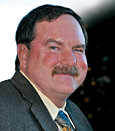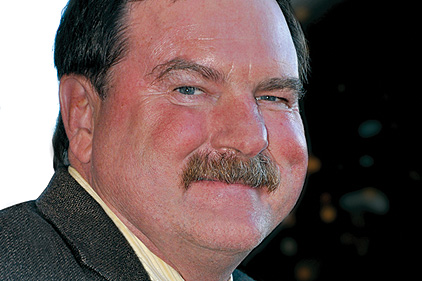At the Radiant Professionals Alliance (RPA), there’s a strong push to grow the hydronic and radiant market. And one of the forces behind that push is Mark Eatherton, RPA’s new executive director.

|
| Mark Eatherton |
“My primary focus with the RPA is to grow hydronics and radiant, be it heating or cooling,” Eatherton said. “The percentage of the market currently held by hydronics is conservatively estimated to be around 11 percent on a residential basis and about 30 percent on a commercial basis. My job is to change all of that and move the needle more in our favor.”
And moving the needle, he explained, begins with education. That means educating not just contractors, but also architects, engineers, consumers, and government agencies.
“We have to change the way we deliver radiant comfort and take the focus off of radiant floors only. If we keep doing the same things we’ve been doing for the last 20 years, meaning focusing on radiant floors only, we will keep getting the same results — lagging sales efforts, at best,” he said. “We have to completely change our mindset and attitude to sell more of these fantastic systems, and that starts by recognizing the fact that we are in the radiant comfort business, not just the floor-heating business. In short, we are so much more than just radiant floors.”
RPA in Transition
Although Eatherton was initially hired in January as RPA’s technical director, he recently became executive director when his predecessor, Kathleen Mihelich, retired early. But while Eatherton may be new to the job, he has the street cred for it; he’s been a member of RPA since 1995 and has 36 years of trade experience under his belt.
“There are not very many hydronic-based systems that I have not either designed, installed, or worked on,” he said, “including, but not limited to, water recycling systems for large commercial laundries, small and large solar thermal hot water heating systems, hydronics, radiant hydronics, ground-source heat pumps, woody biomass, hydrogen fuel cells, and more.”
With his experience behind him, Eatherton is pressing forward to broaden the RPA member mindset. And this push forward is in line with other transitions that have occurred within the organization in recent years.
It wasn’t long ago that the association’s acronym stood for Radiant Panel Association, but the organization changed its name in 2010 to broaden its reach and expand its mission. Less than two years ago, RPA became part of the International Association of Plumbing and Mechanical Officials (IAPMO).
“The assets of the old RPA were purchased a little over a year and a half ago by IAPMO. They are in the code-writing business,” Eatherton said.
Currently, he said, IAPMO is working to incorporate hydronics into its Uniform Solar Energy Code. At press time, the code was slated to be under review by IAPMO’s technical committee.
“This will be the most comprehensive hydronics code ever produced to date by a code authority,” Eatherton said.
He added, “One of the key features of this code will be the training programs that will be put in place to educate the authority having jurisdiction and its inspectors. Having a code is a good thing for the industry, but without good and properly trained enforcers, it is like having a big dog with a loud bark, but no teeth. This dog will have highly trained teeth that will keep our industry thriving, earn respect for our industry, and gain acceptance from the public at large.”
RPA member Jim French, manager, Advanced Hydronics Inc., Denver, said he is “grateful that the RPA is taking a proactive approach in developing consistent hydronic codes and installation standards for all professionals to follow without fail as we collectively strive to expand the radiant market.”
He added, “In the next few years, we will continue to support the promotion of training and certification programs to prepare and educate hydronic industry professionals for future growth in radiant comfort and overall system efficiency.”
Gregory Jannone, another RPA member and president of William Jannone & Sons Inc., Bound Brook, N.J., said he is also pleased with the progress being made by RPA.
“I feel that there are many good programs being implemented in the form of various action groups,” he said. “I would like to see our membership grow while these programs come to fruition.”
Propelling the Radiant Market
According to Eatherton, expanding the radiant market is “going to require a paradigm shift of approach and attitude.”
He said the industry needs to shift from the traditional air-versus-water debate to radiant-versus-convective, and he’s particularly focused on preaching about how hydronic-based systems have the ability to manipulate the mean radiant temperature (MRT).
“I have said no fewer than a hundred times that the MRT drives the bus of human comfort. Oh, sure — air temperature, air quality, and humidity do have a role in delivering full-spectrum comfort to the end users. But MRT is the prime factor surrounding human comfort. Always has been, always will be. And the sooner our contractor members catch on to this and realize that there are more ways to control and manipulate the MRT, the sooner they will catch the wave of lower installed costs and higher degrees of comfort that the consumer is looking for,” Eatherton said. “And that’s where our job begins — educating all parties concerned that you can get excellent radiant comfort from surfaces other than radiant floors.”
As one example, he pointed to radiant ceilings. “I think the largest misconception we will have to deal with is in the deployment and use of radiant ceilings, which, in my estimation, is one of the most overlooked low-cost opportunities to deliver excellent radiant comfort.”
Looking ahead, Eatherton said, “The RPA would eventually like to establish radiant comfort experience centers, which would be public places where people can go and actually experience the different systems.”
Eatherton also invited industry members to join RPA.
“We are an organization of the members, by the members, for the members — with the members and public at large as the benefactors. We need more volunteer members to help move the RPA back into the position of power that it once held, and gain market momentum.”
Longtime RPA member Paul Pollets, owner of Advanced Radiant Technology in Seattle, also encouraged people to join RPA.
“The RPA is the only source for a trade group in the industry, but its support depends on members,” Pollets said. “The new version of RPA is highly poised to help — it has the financial and technical background — but it needs membership support.”
Summing up his mission at RPA, Eatherton said, “Education is key here, and it begins with our industry first.”
Visit www.radiantprofessionalsalliance.org for more information.
Publication date: 10/28/2013
Want more HVAC industry news and information? Join The NEWS on Facebook, Twitter, and LinkedIn today!



Report Abusive Comment